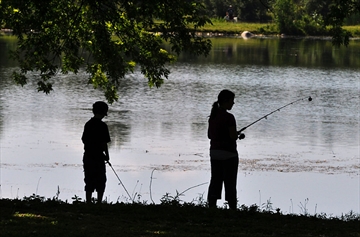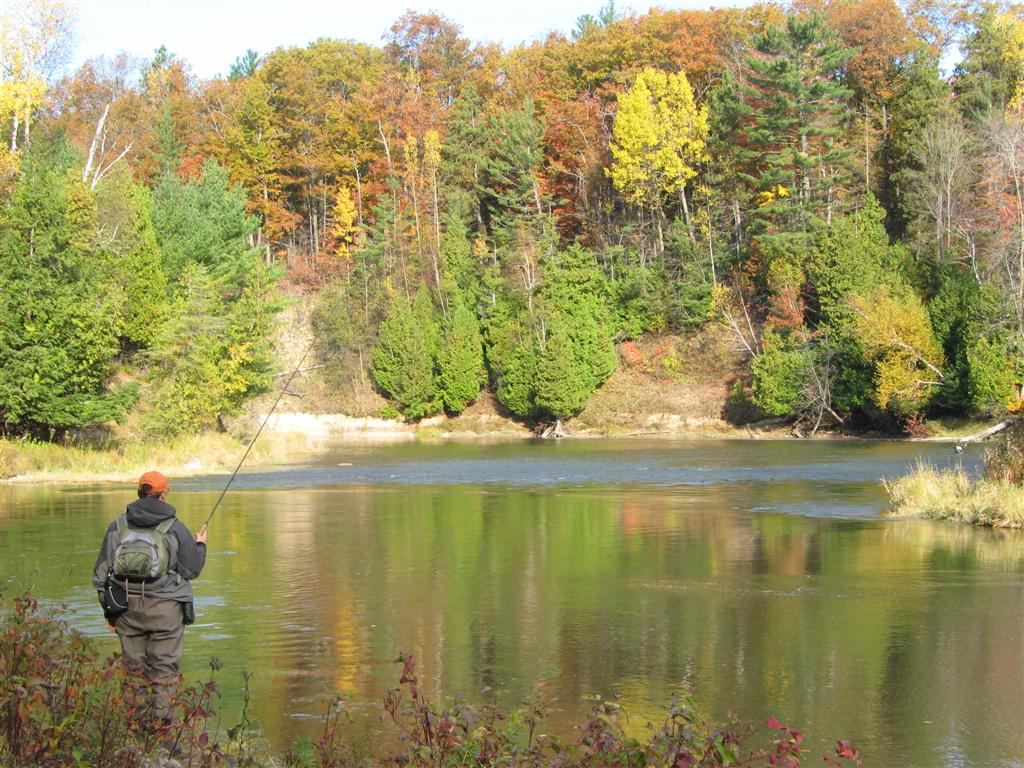The Burbot or Ling:
Lora Lota (Linnaeus) One of the purposes of the following data is to direct attention to the proper use as food of a greatly maligned fish, the burbot;
to look behind those unattractive external features, which have been largely responsible for the prejudice against it, and to show that behind those features there is food value of high quality.
The Burbot or Ling has the distinction of being the sole representative of the codfish family in fresh water. All its relatives live in the sea.
It is also commonly called ling, lawyer, and eelpout. The scientific name “Lota” is from Old French, “Lotte”, which is equivalent to “pout”.
There are two features by which the burbot may be distinguished from other freshwater fishes of our area: (I) the ‘single prominent barbel on the underside of the chin near the tip;
and (2) the small embedded cycloid scales. Like the burbot, the tomcod of the Atlantic coast has a single barbel on the underside of the chin, but it has three dorsal fins and the burbot has only two.
The body is light to dark brown in colour, elongated (up to 40 inches or more) and compressed behind; the head and eyes are small and the mouth large.
Overlying the brown colour of the body are blotches and spots of darker brown or black.
The dorsal, caudal and anal tins are mottled.
Distribution of The Burbot or Ling:
The burbot is found throughout Ontario from the Great Lakes to Hudson Bay. From the eastern portion of Hudson Bay drainage, it ranges to Connecticut, Delaware and Susquehanna systems and all the Great Lakes basins; in the Missouri River system, south to Missouri, Kansas and Wyoming; in the Mississippi River and tributaries, throughout Minnesota and northwest to Alaska.
The same species occurs in the waters of northern Europe and Asia.
Habitat of The Burbot or Ling:
During the summer, burbot seek the cool water of deep lakes and streams but, at other seasons of the year, it may be found at all depths.
It has been found to a depth of 700 feet. At such depths, it feeds upon deep-water chubs, members of the
whitefish family.
In streams, the immatures may be found among patches of plants, the half-grown in stony riffles and the adults under undercut banks.
Anglers take them in fairly large numbers when ice-fishing for other species, probably owing to the practice of prebaiting for Whitefish.
Movements of The Burbot or Ling:
After spawning, burbot move into the mouths of large rivers and into shallow bays under the ice.
During this migration, they feed extensively.
Spawning The Burbot or Ling:
Burbot spawn in mid-winter or in early spring before the ice has melted.
In Ontario, the spawning season ranges from January to March.
They have been found spawning in the swift water of streams in mid-winter.
Fry have been found, with the yolk sac still persisting, when the temperature was 35°F.
They also spawn on the sandy bottoms and gravelly shoals of lakes.
They are prolific spawners and some are probably sexually mature when two years old.
Some mature fish do not spawn every year.
Food of The Burbot or Ling
Generally, small burbot feed on small food items and large burbot feed mostly on larger items.
The food sequence may be as follows: insects, gammarids, crayfish and fish.
But, it will kill fishes its own size.
The burbot competes with lake trout and other sport fishes for food and preys heavily upon the young of most species.
More Related Info on The Burbot or Ling From Traditions Media :
This lone freshwater member of the cod family easily qualifies for the most interesting fish in the world—right up there with megamouth sharks, pufferfish and those bizarre, alien-like creatures that haunt the deep seas.
Particularly intriguing about the enigmatic eelpout is that for most of the year, no one particularly knows where they go. We know that the species’ circumpolar natural range stretches from the Great Lakes to Alaska and across the Bering Strait to Europe and Asia, excluding the United Kingdom, where they’ve not been captured for nearly half a century.
We also know that during late winter, adult burbot begin assembling en masse, spawning on sand and gravel substrates while ice still covers the lake. That’s when anglers encounter and increasingly target them. There’s a movement afoot, particularly among adventurous young ice anglers like Minnesota guide Hays Baldwin and Saskatchewan fishery scientist Jeff Matity, to learn more about the burbot; to study them through the lens of an underwater camera; to learn where and how to catch them; and finally, to appreciate and release the larger, older burbot to swim and spawn once again.
But not all anglers who chance upon burbot appreciate them. For the eel-like fish likes to greet us with a slightly amusing, friendly bark and by “hugging” our forearms with its soft, sinuous tail. Nevertheless, everyone seems to find them fascinating to observe with an underwater camera. When burbot assemble to spawn late each winter, we marvel at their large gregarious assemblies, their spectacular mottled flanks and the impressive energy they display within seemingly tranquil underwater environs.
According to Matity, who has studied burbot in their natural habitat with an Aqua-Vu for years, spawning burbot exhibit some intriguing behavior. “Interestingly, burbot are the only species I know of that participates in the spawn process whether they’re physically spawning or not,” says Matity, a fisheries scientist, fishing guide and writer from For Qu-Appelle, Saskatchewan.
“Fish that aren’t spawning appear very lean relative to the spawners. They arrive first on the spawning shoal, where they eat every living organism that will not leave the area. Non-spawners then keep other animals away from the spawning shoal throughout the process. While pike fishing, we’ve even watched burbot carry deadbaits away from a spawning site and then drop them off several meters away. These nursemaid non-spawners remain in the spawning area to guard eggs until fry hatch, which they detect from scent cues.”
Matity adds that spawning females spend most of their lives feeding in deep water and only visit the spawning shoal to drop eggs. He also believes spawning males make several forays back and forth from spawning sites to keep a full stomach. “During the late winter to early spring spawn season, large burbot are exceedingly vulnerable to harvest,” Matity believes. “Observing a spawning group of fish with an underwater camera can produce the illusion that the lake swarms with large specimens. Actually, as coldwater predators, burbot represent a precious and limited resource—among the first species to suffer when water quality declines.
“They’re absolutely delicious on the dinner table,” adds Matity. “Some folks call them freshwater or poor-man’s lobster. But we strongly encourage the harvest of one or two small fish only, while releasing the larger spawning specimens to swim and treat us to another round of this spectacular underwater ritual.”
Fascinating Burbot Facts:
- Reproduction occurs in pairs, as well as within groups of dozens to hundreds of individual fish.
- Burbot have been captured in extreme Great Lakes depths up to at least 600 feet.
- A single female can lay well over one million eggs depending on her size. Tiny burbot hatchlings measure just 0.15 inches, one of the smallest freshwater fish larvae.
- The burbot’s durable skin was once used as window material in Siberian homes.
- The International Game Fish Association lists the world record burbot at 25-pounds 2-ounces, caught in Lake Diefenbaker, Saskatchewan. Anecdotal evidence points to fish up to 60-pounds once living in other parts of the world.
- Tracking data has shown that burbot often remain inactive and sedentary for over 24 consecutive hours, moving only at sunset or at night.
We are the leading provider of Fly Fishing Lessons, Corporate Team Building, and Guiding on the Upper Grand River, the Upper Credit River, and the Conestogo River.
No Guelph, Fergus, Kitchener or Cambridge Fishing Tackle Retailer will boast as complete and diverse a store inventory, including a vast selection of Centerpin / Float Fishing Reels, Rods, Clothing and Accessories.
Order a HLS or TFC Gift Card – We will put one in the mail for FREE!
Fly Shop Flyshop Flyfish Grand River Fly fish Grand River Guide Grand River Lesson Grand River Fergus Ontario Canada




















































































